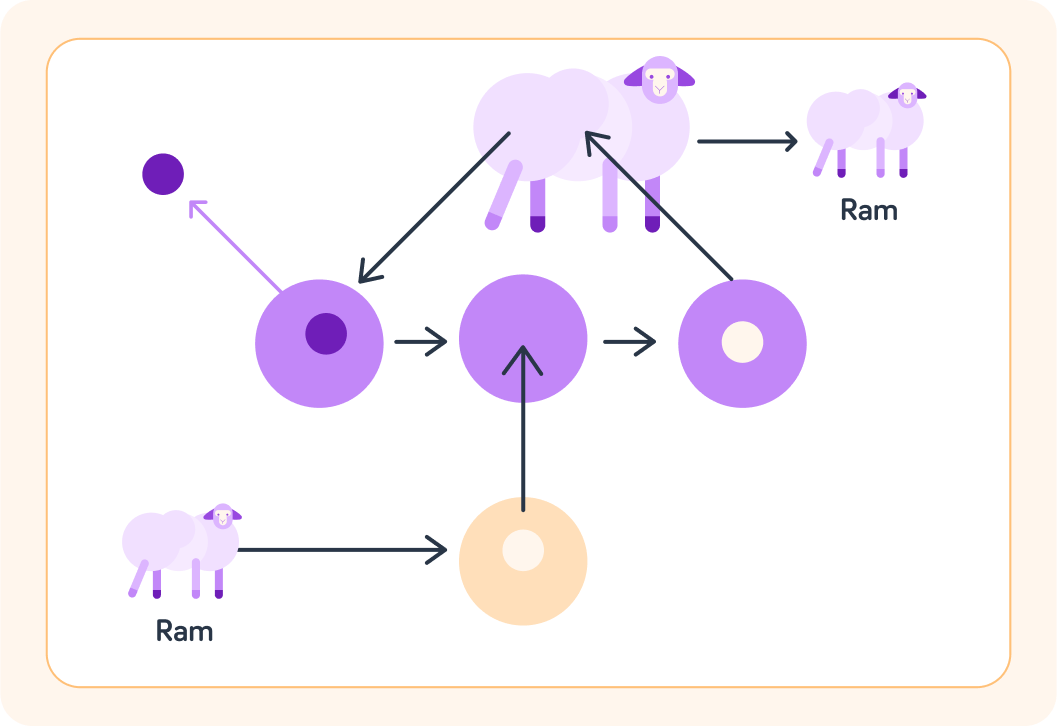YOU ARE LEARNING:
Adult Cell Cloning

Adult Cell Cloning
Dolly the sheep was the first example of an animal cloned using a differentiated adult cell. This lesson talks through the process involved in producing a new organism this way.
In 1996 The Roslin Institute, part of The University of Edinburgh, produced a sheep called Dolly. What do you think was so special about Dolly the Sheep?

Dolly was produced using the genes from a differentiated adult cell. At the time, clones had only been possible by using undifferentiated embryo cells.
An unfertilised egg cell is removed from the host mother.
The nucleus is removed from this cell in the lab.

Why is the nucleus removed ?
A) To remove the original genes from the cells. B) To prevent the cell from dividing.


A normal body cell is removed from the animal to be cloned. In the case of Dolly this was a cell from a sheep's mammary glands. Which of these would also have been suitable cells to use?
A) Egg cells B) Sperm cells C) Skin cells


What do we replace the removed nucleus with?
A) The nucleus from the adult cell B) The nucleus from another egg cell C) The genes from an adult cell


The egg cell with the new nucleus is allowed to develop into an embryo in the lab. To stimulate the egg to start to divide, it is given a small electrical shock. The embryo is then implanted into the uterus of a host mother.
Do you think the host mother has to be the same animal from which the egg was taken?

Although the host mother can be the same animal, in the case of Dolly they didn't want to do this, because they wanted to prove that Dolly was a clone and not the natural offspring of the host mother.
To clone an individual other than the host mother, such as cloning a male (a ram), the same basic process is used.
The only difference is that the replacement nucleus comes from a different animal.

Why might a farmer want to have clones, rather than breeding individuals in the normal manner?
A) It's cheaper. B) It replicates desirable features. C) It is faster than breeding.


Imagine we bred a ram to have a high growth rate, so it could produce meat faster. We could then clone this ram and use the clones for breeding to increase this feature in the flock and in other flocks. Why would we want to use clones, rather than just continuing to breed from the original ram?

You can select multiple answers
Dolly lived for 6 years, she had several offspring of her own, which proved that clones can be fertile. She was eventually put to sleep when it was discovered that she had lung cancer, which is in fact a common condition amongst sheep.
Dolly proved that mammals can be cloned from adult cells and live normal lives. Today, cloning animals is a common commercial practice.
